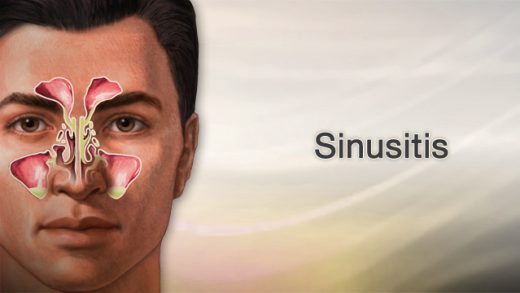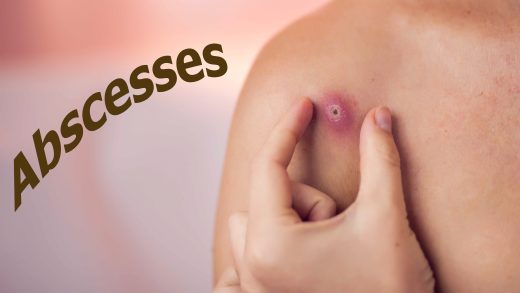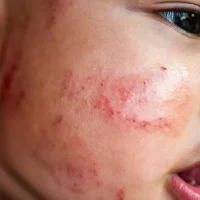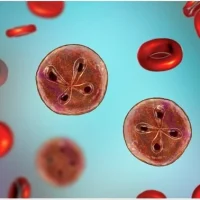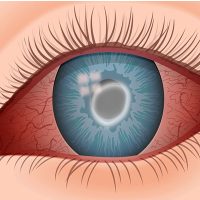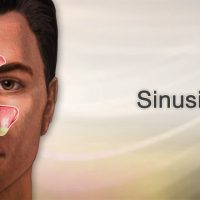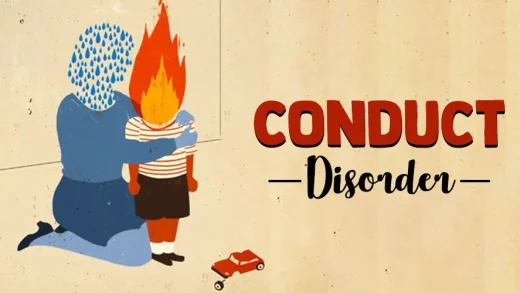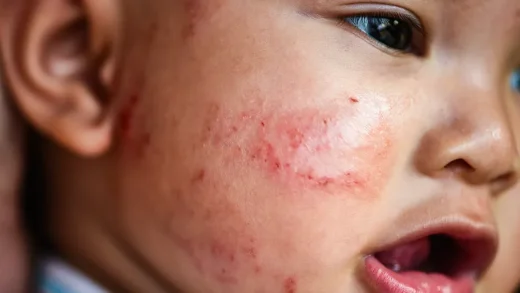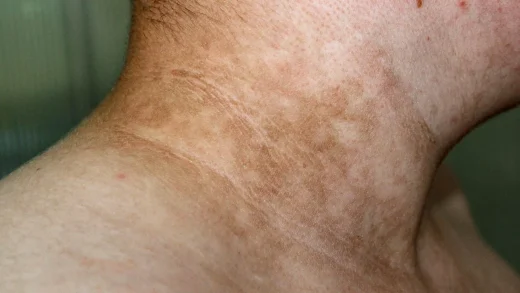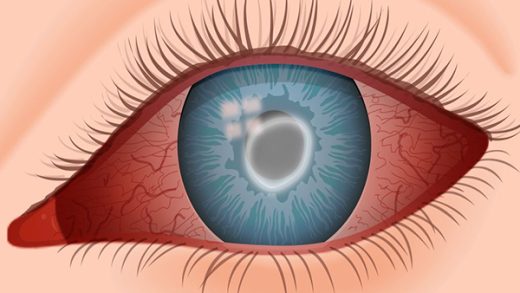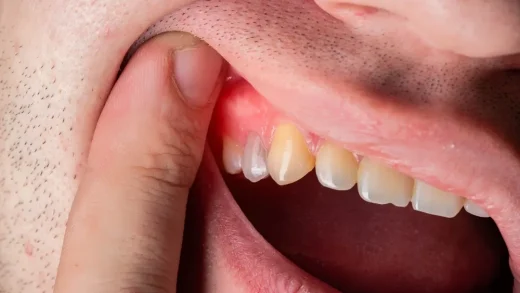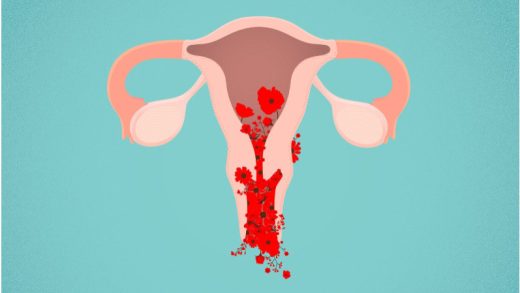Babesiosis is a disease you get from the bite of a tick infected with the parasite Babesia. It causes flu-like symptoms and can lead to severe illness. You’re at higher risk for life-threatening illness if you have a weakened immune system or don’t have a functioning spleen. Combinations of antiparasitics and antibiotics treat babesiosis.
What is babesiosis?
Babesiosis (pronounced “buh-BEE-zee-oh-sis”) is an illness you get from many species (types) of the parasite Babesia. You can get it through the bite of infected blacklegged ticks or from an organ transplant.
Babesiosis usually causes flu-like symptoms. But the parasite’s destruction of red blood cells can lead to life-threatening complications, especially if you have a weakened immune system. A common complication is hemolytic anemia, a condition where your red blood cells are destroyed faster than you can make new ones.
Where is babesiosis found?
You can get babesiosis in places where Babesia parasites and the ticks that carry them are found together. These areas are in the U.S., Europe and Asia. In the U.S., it’s mostly found in the Upper Midwest and Northeast, with a few cases on the West Coast. It’s most common in seven states:
- Connecticut.
- Massachusetts.
- Minnesota.
- New Jersey.
- New York.
- Rhode Island.
- Wisconsin.
How common is babesiosis?
Babesiosis is rare, with fewer than 3,000 cases reported in the U.S. each year. But it’s considered an emerging infectious disease, which means the number of cases has increased in recent years.
Symptoms and Causes
What are the symptoms of babesiosis?
Symptoms of babesiosis start one to four weeks after exposure. They include:
- High fever.
- Tiredness (fatigue).
- Chills.
- Sweating.
- Headache.
- Muscle or joint aches.
- Loss of appetite.
- Cough.
About 1 in 4 people have no symptoms of babesiosis. Unlike other tick-borne diseases, it usually doesn’t cause a rash.
Symptoms of severe babesiosis
Severe babesiosis may cause additional symptoms, including:
- Yellowish skin or eyes (jaundice).
- Pale skin (pallor).
- Dark pee (urine).
- Shortness of breath (dyspnea).
- Nausea and vomiting.
- Abdominal pain.
- Neck stiffness.
- Sudden mood changes or extreme emotional reactions (emotional lability or PBA).
Can babesiosis cause weight loss?
Weight loss isn’t a common sign of babesiosis. But if you don’t feel like eating or are feeling sick to your stomach and vomiting, you might lose weight.
What causes babesiosis?
Several types of Babesia parasites cause babesiosis. Babesia are protozoa, one-celled organisms that are too small to see without a microscope. They get into your blood through a tick bite. There, they infect and destroy your red blood cells. In mild cases, this can make you tired. In severe cases, like if you have a compromised immune system, the infection can cause life-threatening complications.
B. microti is the most common cause of symptomatic babesiosis in the U.S. Other Babesia species that sometimes make you sick include B. duncani, B. divergens, B. venatorum and B. crassa.
How do you get babesiosis?
Babesiosis spreads from animals to humans when a tick bites an infected animal — usually a small rodent, like a mouse — and then bites you. The parasite infects your blood cells and reproduces there.
In the U.S., the blacklegged tick (Ixodes scapularis) is the most common carrier of the parasite that causes babesiosis. Blacklegged ticks carry many other illnesses, including Lyme disease and anaplasmosis. It’s often called a “deer tick,” though deer usually don’t carry babesiosis. In Europe, castor bean ticks (I. ricinus) transmit Babesia.
You can also get babesiosis from a blood transfusion. This happens when a blood donor is infected without knowing it.
Is babesiosis contagious?
No, babesiosis isn’t contagious from person to person. Rarely, Babesia is transmitted from a pregnant person to the fetus.
When are you most likely to get babesiosis?
Babesiosis is most common in the spring and summer. This is because young ticks (nymphs) come out in the spring and are more likely to spread Babesia than adult ticks.
Nymphs are small (about the size of a poppy seed) and can be hard to see. They grow into adults during the summer. You can still get babesiosis from an adult tick, but they’re easier to see, and you’re more likely to remove them before they bite you.
What are the risk factors for babesiosis?
While anyone can get babesiosis, you’re at higher risk for getting severely ill if you:
- Have a compromised immune system. HIV/AIDS, cancer, immune system disorders and certain medications can weaken your immune system.
- Don’t have a spleen or your spleen doesn’t work properly.
- Are older than 60.
What are the complications of babesiosis?
Babesiosis can cause life-threatening complications, especially if you have a weakened immune system. They include:
- Hemolytic anemia. Parasites can destroy so many blood cells that your body can’t make new ones fast enough to replace them. This can lead to heart conditions and heart failure.
- Enlarged spleen (splenomegaly) or liver (hepatomegaly).Splenomegaly can lead to a ruptured spleen.
- Fluid buildup in your lungs (pulmonary edema). This can make breathing hard and lead to heart or respiratory failure.
- Disseminated intravascular coagulation (DIC). DIC is a problem with how your blood forms clots. It can lead to uncontrollable bleeding (hemorrhage).
- Other organ damage and failure. This includes acute kidney injury (renal failure) and liver failure.
Diagnosis and Tests
How is babesiosis diagnosed?
Blood tests diagnose babesiosis. Your healthcare provider will give you a physical exam and ask about your symptoms and health history. Let them know if you’ve recently (within the past three weeks) been in an area where you could’ve been bitten by a tick, even if you don’t remember being bitten. It’s also important for them to know if you’ve had a blood transfusion in the past six months.
If your provider thinks you could have babesiosis, they’ll order tests to look for parasites in your blood. They’ll also rule out other illnesses that can cause similar symptoms.
Management and Treatment
How is babesiosis treated?
Your provider can treat babesiosis with a combination of medications. These include antiprotozoals, antibiotics and antimalarial drugs. They might give them to you through an IV in your arm or in pill or liquid form for you to swallow.
If you’re very sick, you may need other procedures, like a blood transfusion, to get better.
Medications used to treat babesiosis
Your provider might treat you with a combination of these medications:
- Atovaquone.
- Azithromycin.
- Clindamycin.
- Quinine.
Procedures used to treat babesiosis
If you’re very ill, your provider might use other procedures to treat you:
- Blood transfusion. If you have too few red blood cells, your provider might give you blood from a donor to increase the number.
- Exchange transfusion. If you have a high number of parasites in your blood, your provider may give you an exchange transfusion. This process slowly removes some of your blood and replaces it with donor blood.
- Mechanical ventilation. If you can’t breathe well enough on your own, your provider will put you on a ventilator to help you breathe.
- Dialysis. Dialysis performs your kidneys’ functions if they aren’t working properly.
Prevention
Can I prevent babesiosis?
Avoiding tick bites is the best way to prevent babesiosis if you live in or are traveling to an area where it exists. Some specific ways to reduce your risk of tick bites include:
- Keep grass shorter than 5 inches. Ticks wait on long grass to find a host to bite.
- Stay on cleared paths while in wooded areas.
- Use bug sprays approved to keep ticks away (usually those with DEET).
- Use clothing to cover as much of your skin as possible when you’re in the woods or areas with long grass. You can buy clothing that’s pre-treated with tick-repellant if you’re in areas with ticks often.
- Check yourself for ticks after you’ve been outside during warm months. If possible, have someone else check you in places you can’t see yourself (like your scalp and back).
- Ask your veterinarian about the best way to protect your pets from ticks. Check your pets for ticks often, especially after they’ve been outside.
- Follow directions for safely removing a tick if you find one on you.
Outlook / Prognosis
What can I expect if I have this condition?
What to expect if you’ve been diagnosed with babesiosis depends on how sick you are when you’re diagnosed and whether you’re at risk for severe illness:
- If you have a healthy immune system and a mild case of babesiosis, it can go away on its own. Your provider may wait and see if you get better without treatment.
- If you’re at higher risk for severe illness, your provider will treat you with medication.
- If you’re severely ill, your provider will admit you to the hospital. There, they’ll treat the Babesia infection and any complications. You’ll need frequent blood tests to see how you’re responding to treatments.
How long does babesiosis last?
If you have a healthy immune system, babesiosis can last one to two weeks. If your provider treats you with medication, you might start to feel better in a day or two. If you have a weakened immune system, babesiosis can last a long time — months or years.
Can babesiosis come back?
Sometimes, babesiosis symptoms can get better but come back later (relapse). If this happens, your provider will have to treat you again. You’re most at risk for relapse if you have a weakened immune system.
Are there lingering effects of babesiosis?
Even after your other symptoms have gone away, you may still feel tired for several months. You should recover fully once your red blood cell counts return to normal. Ask your provider how long it might take to feel better.
Outlook for babesiosis
Most people with babesiosis make a full recovery. But babesiosis is fatal in about 1 in 10 people who are hospitalized for it.
Living With
When should I see a healthcare provider?
See a healthcare provider if you have symptoms of babesiosis and could have been bitten by a tick. If you have a weakened immune system, seek medical attention if you have any signs of infection.
When should I go to the ER?
Go to the nearest emergency room if you have signs of serious illness, including:
- Fever over 103 degrees Fahrenheit (39.44 degrees Celsius).
- Severe shortness of breath.
- Yellow skin or eyes.
- Confusion or other mental changes.
- Severe stomach (abdominal) pain.
What questions should I ask my doctor?
Questions that might be helpful to ask your healthcare provider include:
- How do I take my medication?
- How long do I need to be treated?
- What medications can I take at home for my symptoms?
- What new or worsening symptoms should I look out for?
- How soon should I feel better?
- When should I follow up with you?
Additional Common Questions
Babesiosis vs. malaria: How are they different?
Babesiosis and malaria have a lot of similarities, but they’re different illnesses. As they’re treated with different medications, it’s important to get properly diagnosed.
Babesiosis:
- Infects and damages blood cells.
- Starts out flu-like. Can progress to serious illness.
- Caused by a protozoan parasite (Babesia).
- Transmitted by ticks.
- Most common in the U.S.
- Looks like rings under a microscope. Sometimes, forms “Maltese cross” shape with four ovals.
Malaria:
- Infects and damages blood cells.
- Starts out flu-like. Progresses to serious illness if not treated.
- Caused by a protozoan parasite (Plasmodium).
- Transmitted by mosquitos.
- Most common in Africa.
- Looks like rings under a microscope.
Is babesiosis the same as Lyme disease?
The same kind of ticks (I. scapularis) transmit babesiosis and Lyme, but they’re different types of illnesses. A parasite causes babesiosis and bacteria cause Lyme disease.
A note from Cleveland Clinic
Babesiosis is an illness you get from many species (types) of the parasite Babesia. If you have a healthy immune system, you’re unlikely to get very sick from babesiosis. But if you have a weakened immune system or don’t have a functioning spleen, it could be life-threatening. Medications can cure babesiosis. They’re most effective if you’re treated as soon as possible.

